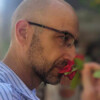


让我们知道您是否想看到这件艺术品的更多照片!
- 工作的背面 / 工作的一面
- 细节 / 签名 / 艺术品的表面或纹理
- 情境中的艺术品, 其他...
One Day They Mistook the Queen of All for Queen of Wars (2024) 图画 由 Anton Terziev
更多信息
- 包装 (盒子或纸箱包装) 所有的作品都配有优质的承运方,经过严格的包装保护和已投保。
- 监控 跟踪订单,直到包裹交付给买方. 将提供跟踪号码,以便您可以实时跟踪包裹。
- 延迟 全球配送会在3-7天内送达 (估计)
- 不包括海关 价格不包括海关费用。大多数国家/地区对原创艺术品没有进口税,但您可能需要支付减免的增值税。海关费用(如果有)将由海关在抵达时计算,并由承运人单独计费。
更多信息
- 可追踪的在线真品证书 可以通过扫描插图的代码随时在线验证真品证书。
- 认证评级艺术家 专家研究一个艺术家的工作和职业生涯,然后建立一个独立的,可靠的平均价格值。平均价格价值座落在一个价格范围内的某一时期的艺术家。专家们也可能被要求建立一个更精确的估计为特定的工作。
更多信息
使用SSL证书进行100%安全付款 + 3D Secure.
更多信息
购买许可证以将此图像用于您的网站、通信或销售衍生产品。
Usage: 网络许可证
| 1023 px | ||

|
1500 px |
| 文件尺寸 (px) | 1023x1500 |
| 全球使用 | 是 |
| 用于多点支持 | 是 |
| 用于任何类型的媒体 | 是 |
| 转售权 | 没有 |
| 最大打印数量 | 0 (Zero) |
| 拟出售的产品 | 没有 |
购买后立即下载
此图片可以用许可证下载: 您可以随时下载它们。
限制
所有在ArtMajeur的图像是由艺术家创作的原创作品,所有权利是严格保留的。获得许可证后有权根据相应条款使用或利用图像。可以进行微小的修改,如重构或重新聚焦图像,使其完全符合新项目要求,但是,禁止进行任何可能损害原始作品的修改。其完整性(形状修改,扭曲,切割,改变颜色,添加元素等),除非事先从艺术家获得书面授权。
定制许可证
如果您的用途不在我们的标准许可证范围内,请联系我们获取定制许可证。
艺术图片银行-
原创艺术品 (One Of A Kind)
图画,
铅笔
在纸上
- 外形尺寸 高度 22.2in, 宽度 15in
- 艺术品状况 艺术品完好无损
- 是否含画框 此作品未装裱
- 分类 画图 低于US$5,000 形象艺术 流行文化
In Eastern Orthodox Christianity, depictions of the Virgin Mary (Theotokos) occupy a central role in devotional practices. Icons of the Holy Mother, especially those referred to as the “Panagia” (Greek for “All-Holy”) or “Queen of All,” convey not only her compassionate maternal qualities but also her status as a powerful intercessor. Traditionally, these icons feature stylized faces—long, slender noses, almond-shaped eyes, and solemn expressions—conveying a sense of spiritual gravity.
Terziev’s pencil portrait adheres to certain stylistic hallmarks of Orthodox iconography:
- The figure’s head covering (veil) is reminiscent of the maphorion worn by Mary in traditional icons.
- The elongated facial proportions and stoic expression suggest the calm yet sorrowful countenance often attributed to the Mother of God.
- The subdued palette—relying solely on graphite—evokes the austerity and focus on line found in early icon sketches or preparatory drawings for frescoes.
However, Terziev departs from tradition by introducing cauliflower ears, a feature more commonly associated with wrestlers or fighters who have suffered repeated trauma. This unexpected twist ruptures the typically serene and unblemished visage of the Holy Mother, calling to mind the physical consequences of violence and conflict.
Despite its unsettling subject matter, the drawing demonstrates a refined pencil technique. Terziev employs varied tonal gradations, crosshatching, and fine textural details to shape the contours of the face. The layering of graphite reveals a nuanced grasp of light and shadow, which lends depth and volume to the figure’s features. The close framing—focusing on the Virgin’s head and upper shoulders—heightens the sense of intimacy, as if the viewer is drawn into a direct and potentially disquieting encounter.
The cauliflower ears themselves are rendered with subtlety, emerging from the surrounding darkness as a stark detail of distress. This juxtaposition between the softness of the shading and the abrupt, rugged texture of the ears mirrors the broader thematic tension in the work—between the sanctity of the Holy Mother and the raw brutality of war.
In Orthodox tradition, icons of Mary are revered as windows into the divine, a conduit for prayer and veneration. By depicting the Holy Mother with a deformity associated with violence, Terziev disrupts the usual sense of sacred invulnerability. He transforms a symbol of peace and compassion into a haunting emblem of suffering, implicitly suggesting that not even the “Queen of All” remains untouched by the ravages of conflict.
Cauliflower ears are typically a result of repeated blunt trauma—an unmistakable sign of physical struggle. Their inclusion on a holy figure speaks to the notion that war leaves its mark on everyone, including icons of hope. It echoes the sentiment that, in times of widespread violence, even symbols of solace and maternal protection bear the scars of collective suffering.
The title, *One Day They Mistook the Queen of All for Queen of Wars*, underscores the confusion and tragedy of modern conflict. Terziev may be pointing to how quickly messages of love and unity can be twisted into rallying cries for aggression. It also suggests a broader critique of how religious symbolism can be appropriated for nationalistic or militaristic purposes, blurring the line between spiritual reverence and ideological fervor.
Terziev’s drawing can be situated within a lineage of modern and contemporary artists who challenge religious iconography to comment on social or political crises. While reminiscent of the bold reworkings of traditional subjects seen in the works of Georges Rouault or Pablo Picasso’s religious sketches, Terziev’s approach is distinctly contemporary. He avoids overt coloristic drama in favor of a quiet, monochrome intimacy, using subtle distortions to convey the trauma of warfare rather than overtly shocking imagery.
The nuanced pencil work also calls to mind Käthe Kollwitz’s depictions of grief and suffering—where expressionist linework underscores the emotional toll of violence. However, Terziev’s focus on a venerated figure sets his piece apart, highlighting how sacred iconography can bear new significance in an era defined by perpetual conflict.
Viewers may find *One Day They Mistook the Queen of All for Queen of Wars* deeply unsettling. The tension between the reverence traditionally afforded to the Holy Mother and the blunt reference to war’s brutality can provoke strong emotional reactions—ranging from empathy and sorrow to disquiet or even offense. This ambivalence is precisely what lends Terziev’s work its power: it demands that viewers confront the dissonance between ideals of peace and the harsh realities of our time.
In *One Day They Mistook the Queen of All for Queen of Wars*, Anton Terziev merges the sacred language of Eastern Orthodox iconography with an unsettling symbol of physical trauma. The delicate yet haunting pencil rendering challenges assumptions about the inviolability of religious imagery, suggesting that no symbol—however revered—remains untouched by the specter of violence. Through its potent blend of technical skill and provocative subject matter, Terziev’s drawing stands as both a lament for the ravages of war and a stark reminder that even our most cherished icons are not immune to the wounds of a world in conflict.
相关主题
安东·泰尔齐耶夫 (Anton Terziev) 是一位当代保加利亚艺术家,他是一位运用尖锐讽刺作为艺术工具来处理各种当代主题的大师。他的作品的特点是对图像的深刻运用,传达了鲜明而批判性的意象。在他的艺术作品中,安东巧妙地将赌注、技巧和讲故事的元素编织在一起,产生了具象的当代艺术,其中带有社会评论、幽默和关于艺术家状况的信息。
安东·泰尔齐耶夫 (Anton Terziev) 从两个不同的来源汲取灵感。首先,他的艺术往往源于现实生活中的事件,以激发他的创作过程的方式在他周围展开。其次,他的想象力在他的作品中发挥着关键作用,使他能够创作出生动且发人深省的图像。他的每件作品都装饰着从电影和书籍中提取的流行文化的微妙元素。每件作品中都蕴含着一种叙事,一种元文本,既丰富了观众的体验,又不会让他们不知所措,因为安东相信,好的艺术可以温和而有效地进行交流。
安东作品的独特之处在于他坚定不移地致力于给观众留下一种无限的惊奇感。他的作品邀请观众与艺术进行对话,鼓励他们解释、质疑和探索他所呈现的叙事。为他的作品选择完美的标题是一个挑战,他经常从文学、电影或音乐中汲取灵感来应对。
安东·泰尔齐耶夫的画家生涯与他的作家身份错综复杂地交织在一起。他的想法以绘画和艺术品的形式得以体现,体现了他多样化的才能。除了绘画之外,他还通过表演、电影制作和设计将他的艺术愿景变为现实,展示了多方面的创意表达方式。







